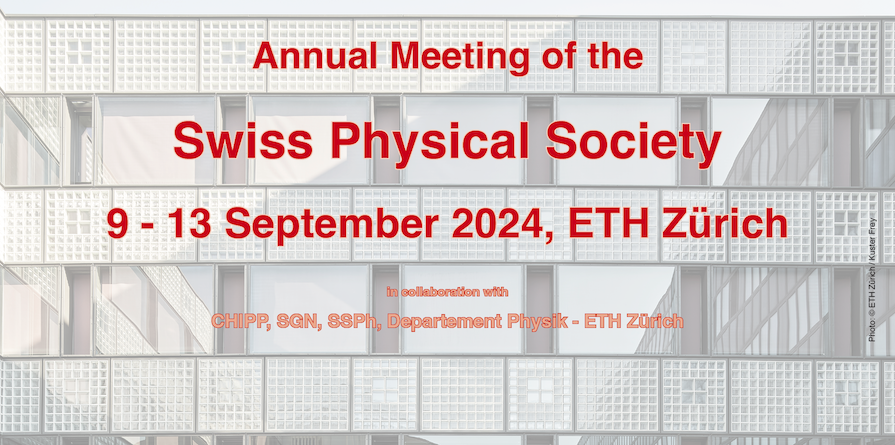Strongly interacting Fermi liquids often turn into bad metals at elevated temperature. How this crossover proceeds is largely unknown, as is the nature of the bad metal state. Here, we address this question by studying the temperature dependence of quasiparticles in the model Fermi liquid Sr$_2$RuO$_4$. In contrast to common ARPES beliefs, our experiments show that quasiparticles do not...
The interfacial coupling between electronic states in a two-dimensional system and bosonic excitations in an adjacent substrate are still poorly characterized in van der Waals heterostructures. Here, we investigate the nature of such interactions in the electronic states of a WS$_2$/hBN stack via angle-resolved photoelectron spectroscopy. We resolve dispersing satellites separated from the...
Planar Ge/SiGe heterostructures are integral to quantum technologies, particularly as platforms for quantum computation using hole-spin qubits. Compressive strain applied to germanium alters the energy dispersion of holes at the $\Gamma$-point, lifting the degeneracy between heavy and light holes by $130$ meV. This results in two two-fold degenerate bands, characterized by effective spins...
Electron-optical deflectors in the lenses of hemispherical analyzers have been changing the data acquisition strategies of ARPES significantly. Among other benefits, keeping the experimental conditions constant (the sample light geometry stays fixed) and enhanced acquisition precision (no mechanical movement is involved) have increased the data quality and acquisition speed. However, several...
Sr$_2$IrO$_4$ is a layered perovskite isostructural to the cuprate La$_2$CuO$_4$. The combination of strong spin-orbit coupling inherent to Ir$^{4+}$ ions and modest Coulomb interaction induces a Mott insulating ground state. Theses similarities with cuprates extend to the unusual metallic state of lightly doped Sr$_2$IrO$_4$ characterized by Fermi arcs and a pseudogap. Here, I will present...
α-SnTe(111), a semiconducting and ferroelectric material, exhibits unique topological behavior. At room temperature, its rocksalt structure enables a metallic topological surface state. However, below a critical temperature, a structural distortion suppresses this state, leading to a macroscopic ferroelectric polarization and significant Rashba splitting. Firstly, using ARPES, we can follow...
Excitons (coupled electron–hole pairs) in semiconductors can form collective states that exhibit spectacular nonlinear properties and possible applications in future optoelectronic devices.
We present here some theoretical methods and a workflow for determining the excitonic wave functions and the corresponding excitonic binding energies for bulk Black Phosphorus. We solve the Bethe-Salpeter...
In 2D semiconducting quantum materials, organic semiconductors and their heterostructures, the energy of absorbed light is stored in Coulomb-bound electron-hole pairs, i.e. excitons. In our research, we have built a new photoemission-based experiment that is capable studying excitons at the space-time limit (nanometers and femtoseconds). In my talk, I will present the ultrafast formation...
Attosecond transient absorption spectroscopy studies are presented to provide a systematic overview of the electronic and phononic response of optically excited thin-film transition metals on timescales ranging from a few femtoseconds to hundreds of picoseconds. Special emphasis is placed on understanding the balance between independent-electron population dynamics and correlated electron...
Manifestations of quantum fluctuations on ground states and their excitations are at the heart of condensed matter physics. Electronic two-dimensional square-lattice systems are in the moderate coupling limit extremely complex. Here, we introduce an ultra-clean half-filled cuprate system with moderate correlation strength. Using high-resolution resonant inelastic x-ray scattering, we probe the...
The ferromagnetic van der Waals Material VI$_{3}$ is proposed as a Mott insulator with S = 1 state. A distinct symmetry breaking indicative of the FM transition is observed in the Raman spectra of monolayer samples. This study investigates low-energy excitations in VI$_{3}$ using high-resolution resonant inelastic X-ray scattering (RIXS). We identify the spin wave, revealing insights into the...
Exfoliable magnetic van der Waals (vdW) materials have enabled the study of magnetism at the true two-dimensional limit. Bulk CrPS4 is an A-type vdW antiferromagnet with strong correlation between the electronic, orbital, structural properties and the magnetic state. I will present our temperature-dependent resonant inelastic X-ray scattering (RIXS) data: the linear-dichroic RIXS intensity of...
We report a resonant inelastic X-ray scattering study of multilayers made from a cuprate high-Tc superconductor and a magnetic perovskite manganite [1]. Our study reveals combined spin and orbital order at the interfacial cuprate monolayer constituting a 2D altermagnetic state. Our findings significantly advance state of the art in the field of altermagnets that are of great current interest...
This study reports direct observation of charge order fluctuations in the unconventional superconductor $\mathrm{La_{1.675}Eu_{0.2}Sr_{0.125}CuO_4}$ (LESCO) using resonant inelastic x-ray scattering (RIXS). Charge order is linked to and competes with superconductivity in cuprates, making its fluctuations key to understanding the low-energy physics in these materials. Past studies mainly...
